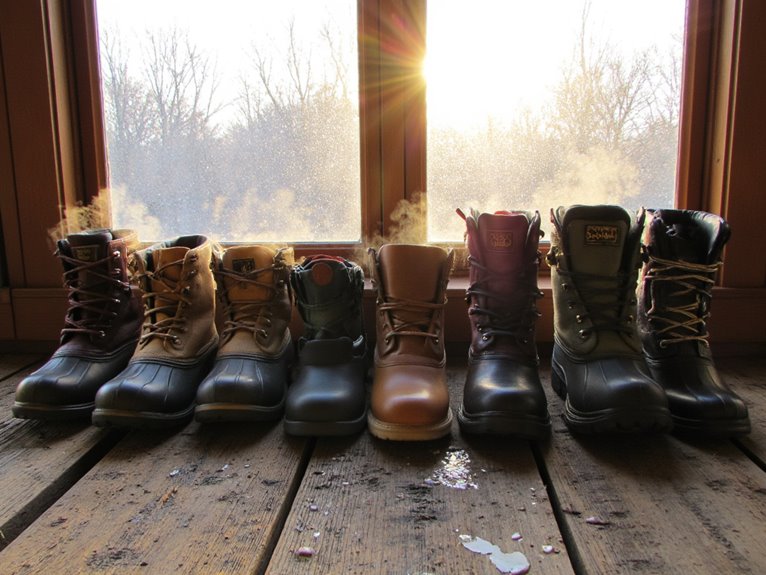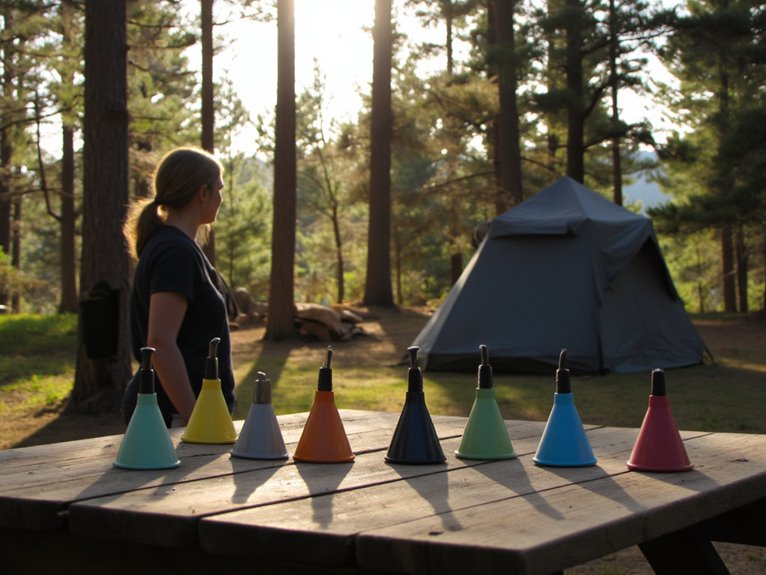What Pans to Avoid When Cooking?
In the realm of cooking, some pans can be more trouble than they're worth. Non-stick pans with fragile coatings, thin and flimsy pans prone to warping, and copper pans without a lining that can leach toxic metals into your food are all pans to avoid. Add to that list antiquated cookware with lead content, pans with hotspots and bubbles that lead to uneven cooking, and those with rough surfaces that make cleanup a nightmare. Steer clear of these cooking culprits and discover the safe and effective alternatives that'll take your cooking to the next level – and there's more to come.
We are supported by our audience. When you purchase through links on our site, we may earn an affiliate commission, at no extra cost for you. Learn more. Last update on 6th January 2026 / Images from Amazon Product Advertising API.
Pans With Non-Stick Coatings
Most non-stick pans, touted as a low-maintenance cooking solution, actually require more upkeep than they're worth, thanks to their notoriously fragile coatings.
A scratch or chip can expose the underlying metal, rendering the pan useless.
In addition, the non-stick coating can break down when exposed to high heat, metal utensils, or harsh cleaning products.
This means you'll need to baby your pan, using gentle cleaners and soft sponges, and avoiding metal utensils altogether.
Furthermore, the coating will eventually degrade, requiring replacement.
With all the fuss and bother, it's no wonder many cooks opt for more durable, low-maintenance options.
Thin and Flimsy Pans
Thin and flimsy pans are a recipe for disaster in the kitchen.
Not only do they lack durability, making them prone to scratches and dents, but they also suffer from heat distribution issues, leading to uneven cooking results.
Additionally, their tendency to warp under high heat only adds to the list of reasons why these pans are best avoided.
Lack of Durability
Flimsy pans that bend and warp at the slightest provocation are an exercise in frustration, making cooking a chore rather than a joy.
They're like the unreliable friend who always cancels plans at the last minute – you can't count on them when you need them most.
A good pan should be a trusted companion in the kitchen, not a source of stress.
But pans lacking durability often come with a host of issues, from uneven cooking to annoying scratches and chips.
And let's not forget the inevitable rust that sets in, rendering the pan useless.
It's time to bid farewell to these flimsy impostors and hello to a cooking experience that's truly enjoyable.
Heat Distribution Issues
Cooking with a pan that can't distribute heat evenly is like trying to navigate a road trip without a GPS – you're bound to end up lost in a culinary wilderness of burnt offerings and undercooked disasters.
Thin and flimsy pans are notorious for their heat distribution issues, causing hotspots that can scorch your food in an instant.
This uneven heating can also lead to undercooked areas, making your dish a culinary catastrophe.
Avoid these pans at all costs, as they'll only lead to frustration and wasted ingredients.
Instead, opt for pans made from thick, heavy-duty materials that can distribute heat evenly, ensuring your dishes turn out perfectly cooked and delicious.
Prone to Warping
Pans that resemble aluminum foil in thickness are ticking time bombs, waiting to warp and ruin your culinary creations at the most inopportune moments.
Thin and flimsy pans are a recipe for disaster, as they can't withstand high heat or sudden temperature changes.
When heated, they'll buckle and warp, causing your carefully crafted dishes to slide around like they're on a slip 'n slide.
Avoid these pans at all costs, as they'll drive you mad with frustration.
Instead, opt for pans with a sturdy construction that can handle the heat.
Your cooking skills (and your sanity) will thank you.
Copper Pans With No Lining
Without a protective barrier, copper pans with no lining can leach toxic metals into your food, making them a potentially hazardous choice for the health-conscious home cook.
This is because copper can react with acidic foods, releasing harmful compounds into your meal.
The risk is especially high when cooking with tomatoes, citrus, or vinegar-based dishes.
While copper pans can be a stylish addition to any kitchen, the health risks associated with unlined copper cookware make them a pan to avoid.
Instead, opt for copper pans with a durable, non-reactive lining, such as stainless steel or tin, to safeguard your culinary creations are both delicious and safe to eat.
Pans With Hotspots and Bubbles
In the domain of cooking, few frustrations rival the experience of watching your carefully crafted meal simmering away in a pan that's more hot air than even heat, courtesy of hotspots and bubbles that can quickly turn a culinary masterpiece into a culinary disaster.
These pesky imperfections can lead to uneven cooking, burnt food, and a whole lot of disappointment.
Pans with hotspots and bubbles are often made from low-quality materials or have a poorly designed heat distribution system.
When shopping for a new pan, look for ones with a thick, heavy bottom and a durable non-stick coating to facilitate even heat distribution and a bubble-free cooking experience.
Pans With Rough Surfaces Only
Roughly textured cookware can transform even the most skilled chef into a culinary cowboy, wrestling with stuck-on food and tedious cleanup.
The rough surface provides a perfect haven for food particles to cling to, making cooking and cleaning a nightmare.
Additionally, the uneven surface can lead to hotspots, causing food to burn or cook unevenly.
This can be particularly problematic when cooking delicate dishes that require precise temperature control.
To avoid the frustration and mess, it's best to opt for cookware with smooth, non-reactive surfaces that promote easy food release and effortless cleaning.
Antique Pans With Lead Content
When it comes to antique pans with lead content, the allure of vintage charm can be deceiving.
In reality, these pans pose a serious threat to our health, as lead exposure can have devastating consequences.
As we examine the risks associated with lead-tainted cookware, it's essential to separate nostalgia from necessity, ensuring our culinary pursuits don't come at the cost of our well-being.
Lead Exposure Risks
Many antique pans, particularly those manufactured before the 1980s, contain lead, a toxic substance that can leach into food and pose significant health risks if ingested.
Lead exposure has been linked to neurological damage, developmental issues, and even organ failure.
The risks are especially high for children, pregnant women, and people with weakened immune systems.
When cooking with lead-containing pans, the acidic or salty nature of food can accelerate lead leaching, making it more hazardous.
To avoid lead exposure, it's essential to identify and avoid using antique pans with lead content.
Instead, opt for safer, lead-free alternatives that prioritize your health and well-being.
Vintage Pan Safety
In the domain of vintage pans, the allure of their aesthetic appeal can be strong, but it's essential to prioritize safety over style and recognize that antique pans with lead content are not worth the risk to your health.
Those beautiful, ornate designs and nostalgic charm can't compensate for the dangers of lead poisoning.
Brain damage and developmental delays in children
Organ damage and cardiovascular problems in adults
Increased risk of miscarriage and stillbirth
Permanent neurological damage and even death in extreme cases
Don't let the charm of vintage pans cloud your judgment – prioritize your health and opt for safer, lead-free cookware instead.
Toxic Legacy Remains
Beyond their aesthetic appeal, antique pans with lead content leave a toxic legacy that persists long after they're relegated to the back of the cabinet or displayed on a decorative shelf.
The allure of vintage cookware can be tempting, but beware: lead-based glazes can leach into food, posing serious health risks.
It's not just about the Instagram-worthy snapshots; it's about the toxic residue left behind.
Even if the pan is no longer used for cooking, the lead can still contaminate surrounding surfaces and dust.
So, think twice before displaying that 'charming' antique pan, and consider the long-term consequences of lead exposure.
Safe cooking practices start with safe cookware – ditch the lead-laden relics and opt for modern, non-toxic alternatives.



